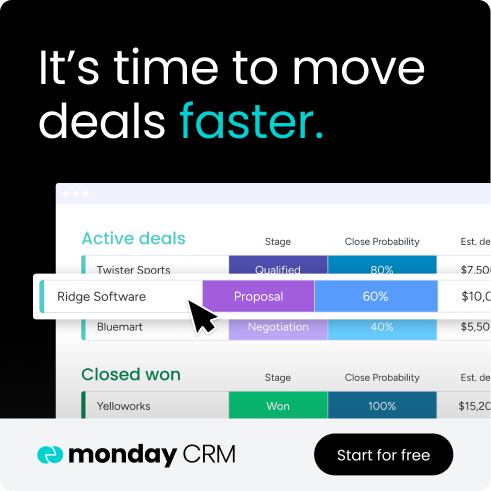Sending a mass email is simple, but turning it into a powerful tool for engagement takes strategy. The difference between emails that get deleted and those that drive results comes down to relevance, timing, and trust. When you master these elements, mass email transforms from a basic broadcast into meaningful conversations that build relationships at scale.
This guide walks you through proven practices that boost open rates and drive real business results. You’ll discover how to craft compelling subject lines, segment your audience effectively, personalize at scale, and master technical deliverability. We’ll also cover how to navigate legal requirements and track the metrics that matter.
Try monday CRMKey takeaways
- Keep subject lines under 50 characters, ask questions, and create urgency to dramatically boost open rates.
- Use purchase history, behavior data, and location to make every email feel individually crafted for better engagement.
- Remove inactive subscribers regularly and test send times to ensure your emails actually reach the inbox.
- Focus on open rates, click rates, and revenue generated rather than vanity metrics to make data-driven improvements.
- Real personalization becomes possible by connecting purchase history, support tickets, and website activity in monday CRM for smarter email campaigns.
What is mass email?
Mass email means sending one message to hundreds or thousands of people at the same time. This means you write one email and send it to your entire list — whether that’s customers, subscribers, or prospects — all at once.
Here’s where mass email differs from targeted email strategies: While mass email broadcasts the same message to everyone, emails tailored to specific buyer personas or audience segments deliver customized content to different groups.
| Approach | Description | Typical goal | Example use case | Common KPI |
|---|---|---|---|---|
| Mass email | Sends one identical message to your entire list | Awareness and reach | New product or feature announcement | Open rate |
| Segmented email | Targets groups with customized content based on shared traits | Relevance and conversions | Tailored offers by region, industry, or role | Click-through rate, revenue |
| Triggered/automated email | Sends automatically when users take specific actions | Timely engagement | Abandoned cart, welcome, or re-engagement series | Conversion rate |
For example, a mass email might announce a new product feature to your entire list, while a segmented approach would send different versions: one highlighting time-saving benefits to busy executives, another emphasizing cost savings to budget-conscious managers, and a third focusing on technical capabilities for IT professionals.
Both approaches have their place, but segmented emails typically achieve higher engagement because they speak directly to each recipient’s specific needs and interests.
Understanding mass email in modern marketing
Mass email works differently than other types of emails you might send. Transactional emails go out automatically when someone makes a purchase or resets their password. Triggered emails send based on specific actions, like abandoning a shopping cart.
Mass emails, on the other hand, broadcast the same message to many people at once. You control when they send and who receives them.
Most businesses use mass email for:
- Newsletters: Regular updates about your company or industry
- Promotions: Special offers, sales, or discounts
- Announcements: New products, features, or company news
- Content sharing: Blog posts, guides, or educational resources
The direct impact of open rates on revenue
Email open rates show you what percentage of people actually open your emails. If you send 1,000 emails and 200 people open them, that’s a 20% open rate.
If people don’t open your emails, nothing else matters. Open rates create a domino effect in your marketing, because if someone opens your email, they might also click a link. That click might lead to your website and that visit might boost your email conversion rate.
For business leaders, open rates signal whether your email strategy works. Declining rates often mean bigger problems. Maybe your messages aren’t relevant anymore, or you’re emailing too often. Rising rates suggest you’re connecting with your audience and building stronger relationships.
Key challenges in mass email campaigns
There are some common challenges you might come across, but understanding them will help you build a strong foundation for high open rates.
- List quality issues happen when you email outdated addresses or people who never wanted to hear from you. Bad lists lead to a high email bounce rate, spam complaints, and damaged sender reputation.
- Content relevance becomes a problem when you send the same generic message to everyone. A small business owner has different needs than an enterprise executive, yet many companies treat them the same.
- Technical setup might sound boring, but it’s crucial. Proper authentication and configuration ensure your emails land in inboxes instead of spam folders.
- Timing matters more than you might think. Send emails when people are asleep or busy, and they’ll get buried under newer messages.
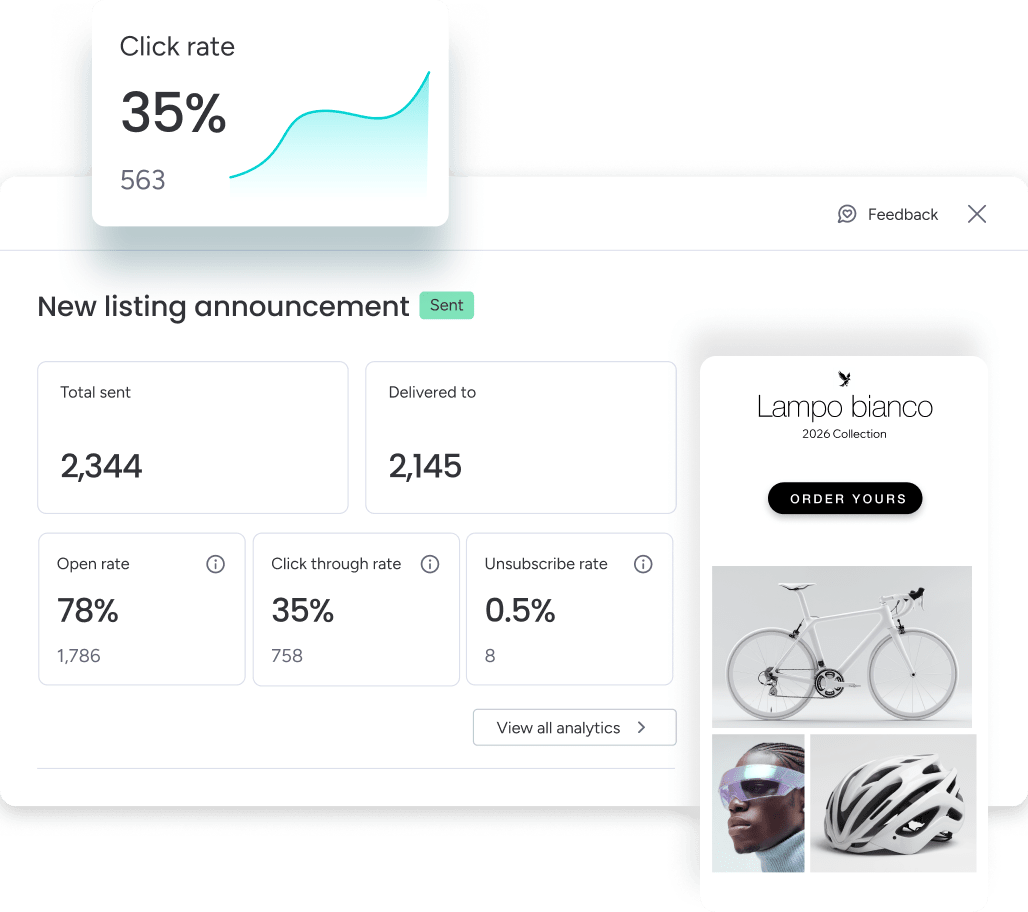
12 proven mass email best practices for higher open rates
These strategies can transform your email performance. Start with the ones that address your biggest challenges, then work through the rest as you refine your strategy.
1. Craft subject lines that demand attention
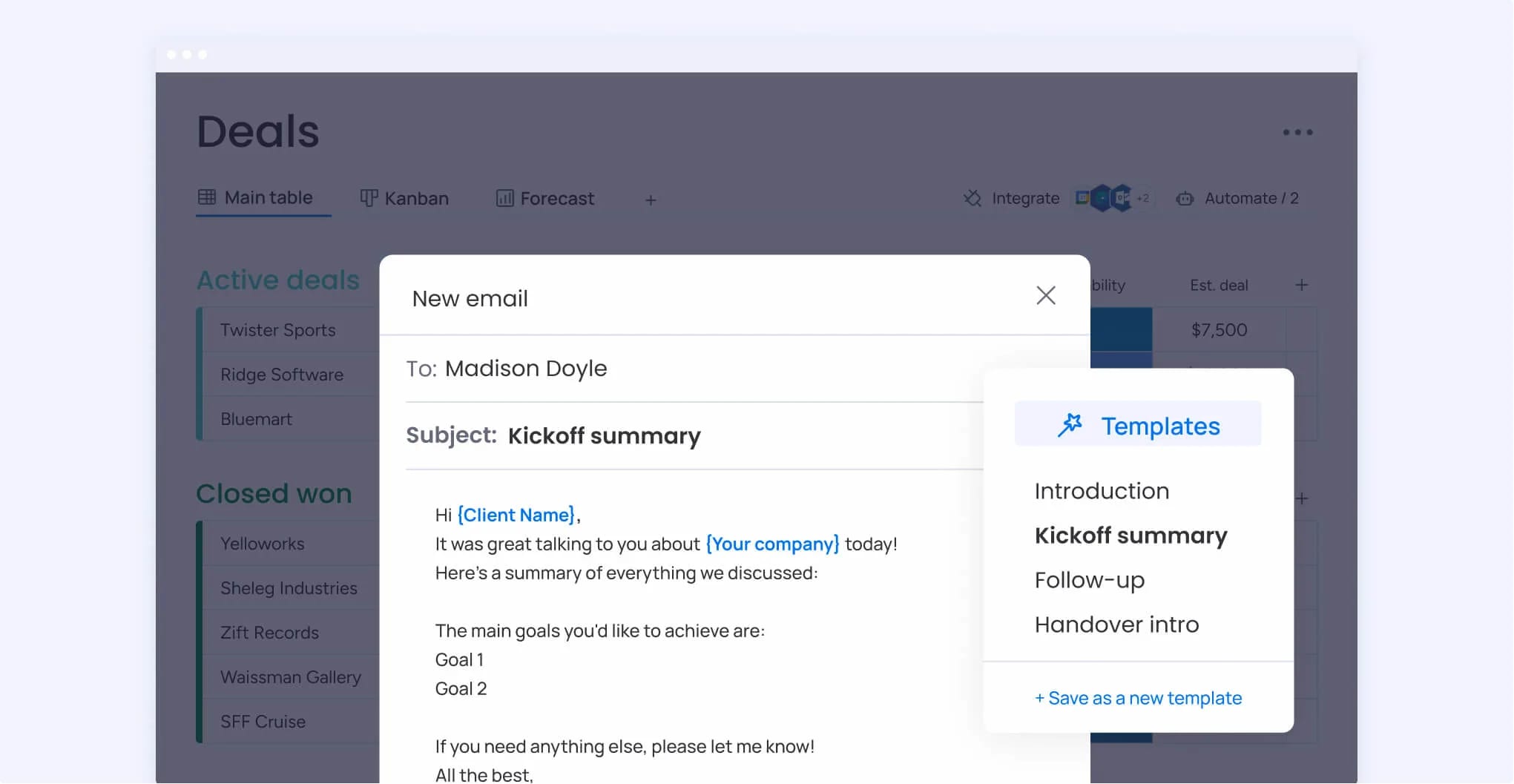
Your subject line is the gatekeeper to your email. It determines whether someone opens your message or deletes it.
Keep subject lines short, aiming for 30-50 characters so they display fully on mobile phones. Most people check email on their phones, and long subject lines get cut off.
Here’s what works:
- Ask questions: “Ready to save 2 hours per day?” beats “Our new time-saving feature”
- Create urgency: “Last day for early bird pricing” motivates immediate action
- Personalize thoughtfully: “John, your custom report is ready” feels more relevant than generic messages
- Avoid spam triggers: Words like “free” or “guarantee” as well as excessive exclamation marks will send you straight to spam
2. Personalize every element beyond names
Real personalization goes deeper than “Hi [First Name].” It means tailoring your entire message based on what you know about each recipient.
Use purchase history to recommend related products. Reference their location for local events or weather-specific offers. Mention their industry when sharing relevant examples.
Personalization is easier using monday CRM because it centralizescustomer datain one place. When you know someone’s purchase history, website activity, and support interactions, you can create messages that feel personally crafted.
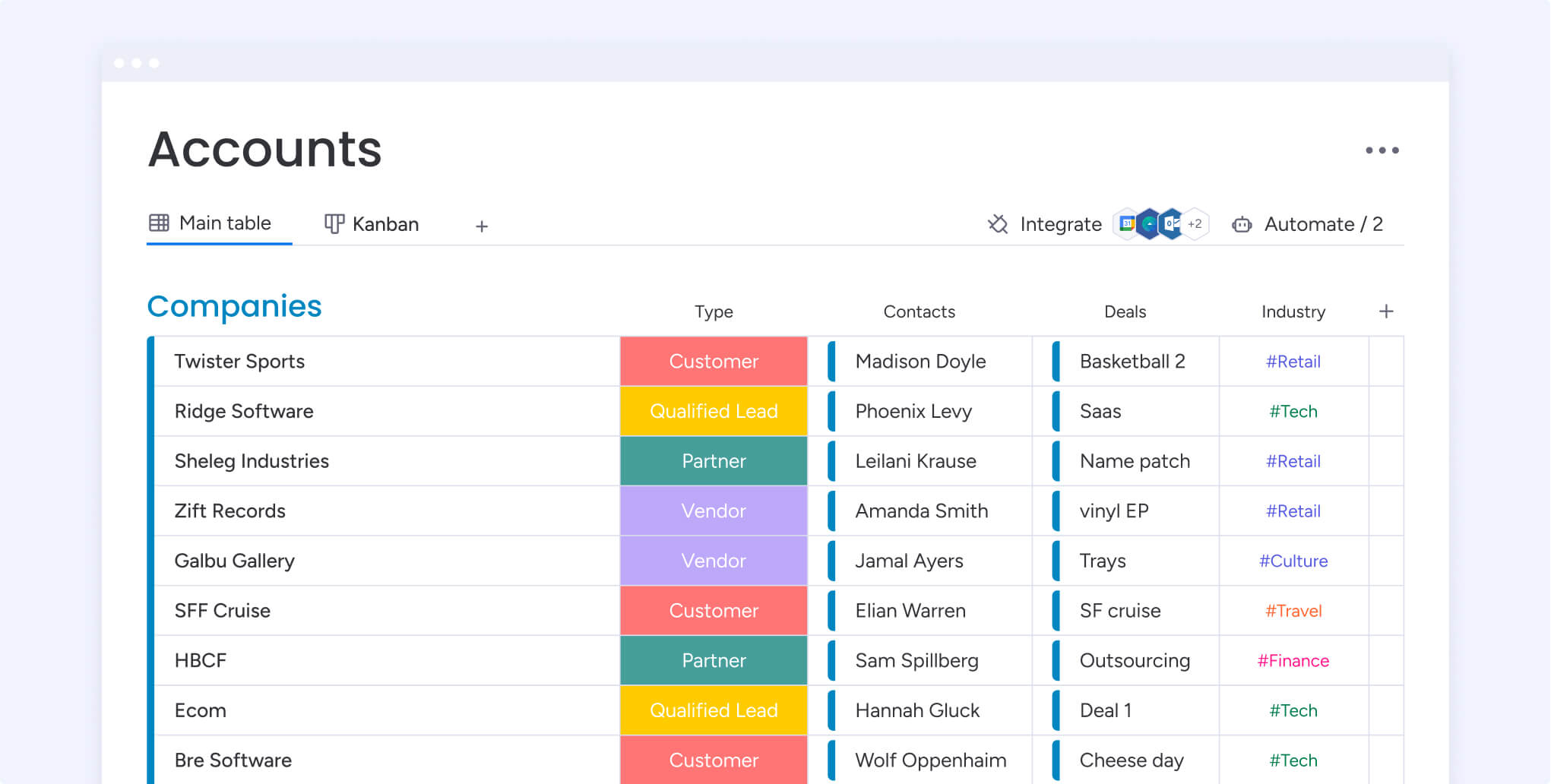
3. Segment lists for maximum relevance
Segmentation means dividing your email list into smaller groups based on shared traits. Instead of sending one message to everyone, email segmentation lets you send targeted messages to specific segments.
Common segmentation strategies include:
- Demographics: Age, location, job title, company size
- Behavior: Purchase history, email engagement, website activity
- Lifecycle stage: New subscribers, active customers, lapsed users
- Interests: Product preferences, content topics, stated needs
Or, you can segment like this:
- New vs. returning customers
- High vs. low engagement (last 90 days)
- Last product category viewed/purchased
4. Time your mass emails perfectly
When you send matters almost as much as what you send. The right timing can turn a routine campaign into one that actually gets seen — and opened. While there’s no universal “best time,” using a CRM with built-in email analytics helps you find your team’s sweet spot faster.
Here’s how to dial it in:
- Think about your audience’s day. B2B readers usually check email early, between 8–10 a.m., while B2C audiences tend to engage later in the afternoon or evening.
- Test, don’t assume. Try different days and send times with small test groups before rolling out to your full list. Watch your open and click-through rates to spot patterns.
- Consider time zones. A 9 a.m. send in New York hits inboxes at 6 a.m. in Los Angeles — long before most people are awake. Stagger sends or segment by region to stay visible.
Over time, these experiments reveal when your audience is most responsive — letting you schedule every campaign for maximum impact.
5. Maintain a clean email list
A clean email list is your first line of defense against deliverability issues. When you maintain your list regularly, you’re catching problems before they snowball into campaign-killing reputation damage.
Start by removing hard bounces right away. These email addresses simply don’t exist anymore. Keep an eye on soft bounces that keep failing, and flag subscribers who haven’t opened anything in months. These are all warning signs that your list needs attention.
Before you cut inactive subscribers loose, give them one last chance with a re-engagement campaign. A compelling offer or a simple “Do you still want to hear from us?” can work wonders. You’ll be surprised how many people re-engage when you ask directly. For those who don’t respond or confirm they’re done, it’s time to suppress or sunset those contacts—protecting your sender reputation is worth more than inflated list numbers.
6. Implement double opt-in processes
Double email opt-in requires new subscribers to confirm their email address by clicking a link in a confirmation email. This extra step ensures you’re emailing people who genuinely want to hear from you.
Yes, you’ll get fewer subscribers initially. But those subscribers will be more engaged and less likely to mark you as spam. They’ve proven they want your emails by taking an extra step to receive them.
The process also catches typos in email addresses and filters out fake signups. Quality beats quantity when it comes to email lists.
7. Design for mobile-first reading
Most people read emails on their phones, and if your emails don’t work on mobile, you’re losing a significant part of your audience. Mobile-friendly design means:
- Single column layouts: No side-by-side content that breaks on small screens
- Large buttons: Easy to tap with a thumb
- Short paragraphs: Quick to scan while scrolling
- Readable fonts: No tiny text that requires zooming
Test every email on multiple devices before sending. If you’re using HTML emails, what looks great on your computer might be unreadable on a phone if they’re not optimized.
8. A/B test every campaign element
Email A/B testing compares 2 versions of an email to see which performs better. You change one element, send both versions to small test groups, then use the winner for your main send.
Test one element at a time for clear results, such as subject line, send time, button color, or email length. Make sure your test groups are large enough for meaningful results, and track the same metrics for both versions. Then, apply what you learn to future campaigns.
9. Build strong sender reputation
Your sender reputation determines whether inbox providers trust you — or send your messages straight to spam. A healthy reputation takes consistency, relevance, and a little technical precision.
Here’s how to strengthen it:
- Send consistently. Maintain a steady email cadence rather than sudden volume spikes, which can look suspicious to email filters.
- Keep engagement high. Prioritize subscribers who open, click, and interact. Remove inactive contacts regularly to minimize spam complaints.
- Authenticate everything. Set up SPF, DKIM, and DMARC records to prove you’re a legitimate sender and protect your domain from spoofing.
- Warm up new domains or IPs. If you’re starting fresh, begin with small sends to your most engaged audience, then gradually increase volume each week as deliverability improves.
- Monitor reputation scores. Use tools like Google Postmaster or your ESP’s deliverability reports to spot dips early and adjust before problems snowball.
A strong sender reputation builds over time, but once established, it keeps your emails reliably landing where they belong: in the inbox.
10. Create irresistible CTAs
Your call-to-action (CTA) tells readers what to do next. While CTAs don’t directly affect open rates, they influence overall engagement, which impacts future deliverability.
Strong CTAs use action words and specific benefits:
- Weak CTAs: Click here, Learn more, Submit
- Strong CTAs: Get your free guide, Start saving time today, Download the template now
Make CTAs visually prominent with contrasting colors and surrounding white space. Focus on one main action per email to avoid confusing readers.
11. Track engagement and adapt quickly
If multiple teammates handle responses, a shared inbox makes it easier. Monitoring performance helps you spot problems early and identify what resonates with your audience. Key metrics tell different parts of your email story.
Essential metrics to track:
| Metric | What it measures | Benchmark |
|---|---|---|
| Open rate | Subject line effectiveness and overall inbox visibility | 15–25% |
| Click rate | Content relevance and strength of your CTA | 2–5% |
| Bounce rate | List quality and email deliverability issues | Below 2% |
| Unsubscribe rate | Content or frequency fatigue | Below 0.5% |
Visual dashboards in a system like monday CRM make tracking these metrics simple. You can spot trends, compare campaigns, and make data-driven decisions to improve performance.
Try monday CRM12. Automate for consistent timing
CRM marketing automation sends emails based on triggers or schedules without manual work. This ensures consistent communication and perfect timing.
Welcome emails automatically greet new subscribers when interest peaks. Abandoned cart emails recover lost sales. Birthday messages create personal connections.
Set up behavioral triggers based on website visits, purchase patterns, or email engagement. Create drip campaigns or email sequences that nurture leads over time. Use automation to maintain regular contact without constant manual effort.
Master mass email deliverability
Deliverability means actually reaching the inbox instead of the spam folder. Strong deliverability is the foundation of every successful campaign, ensuring your carefully crafted emails reach their intended audience.
Set up proper email authentication
Email authentication proves you’re allowed to send from your domain. Think of it as showing ID at the door. It tells email providers you’re legitimate.
The 3 authentication protocols we mentioned previously — SPF, DKIM, and DMARC — work together to verify your identity and protect your sender reputation. When properly configured, they signal to inbox providers that your emails are trustworthy and should land in the inbox, not the spam folder.
Most email platforms guide you through setup, but it’s worth getting IT help to ensure everything’s configured correctly.
Avoid common spam filter triggers
Spam filters examine your emails for suspicious patterns. Understanding what they look for helps you stay out of the spam folder.
Write naturally without excessive sales language. Balance images with text — too many images trigger filters. Use reputable link destinations and avoid URL shorteners when possible.
Maintain consistent sending patterns. Sudden spikes in volume or long gaps between sends raise red flags. With monday CRM, you can schedule campaigns and automate sends to maintain a steady rhythm that email providers trust.
Implement IP warming strategies
New IP addresses need to build reputation gradually. Think of it like establishing credit — you start small and prove yourself over time.
Begin by sending to your most engaged subscribers. Start with a few hundred emails, then double volume each week. Monitor metrics closely and slow down if you see problems.
Most email service providers handle IP warming automatically, but understanding the process helps you set realistic expectations. Expect a 2–4 week ramp depending on list size and engagement; prioritize highly engaged segments first.
Scale personalization in mass email campaigns
Personalization at scale seems contradictory. How can something be both mass and personal? Modern platforms make it possible by using data and automation intelligently.
Adapt content based on user behavior
Dynamic content changes based on who’s reading. The same email template shows different products, articles, or offers to different people.
Product recommendations work especially well. Show items related to past purchases or browsing history. Display content that matches stated preferences. Include local information based on geographic data.
This approach makes mass emails feel individually crafted without creating hundreds of separate campaigns.
Segment by engagement patterns
How people interact with your emails tells you how to communicate with them. Highly engaged subscribers want different content than those barely hanging on.
Create segments based on engagement:
- Highly engaged: Exclusive content, early access, insider information
- Moderately engaged: Mix of value and gentle promotion
- Low engagement: Re-engagement campaigns or reduced frequency
- New subscribers: Welcome content and expectation setting
Apply AI for smart personalization
AI analyzes patterns humans might miss and scales personalization beyond manual capabilities, which is why monday.com research shows that 77% of marketing professionals use AI for data analysis and content creation.
AI can predict the best send times for individuals, suggest relevant content, and optimize subject lines automatically. Plus, monday CRM’s unique AI features help teams leverage these capabilities without technical expertise. An AI email generator can categorize contacts, summarize interactions, and suggest next best actions based on customer behavior patterns.
Try monday CRM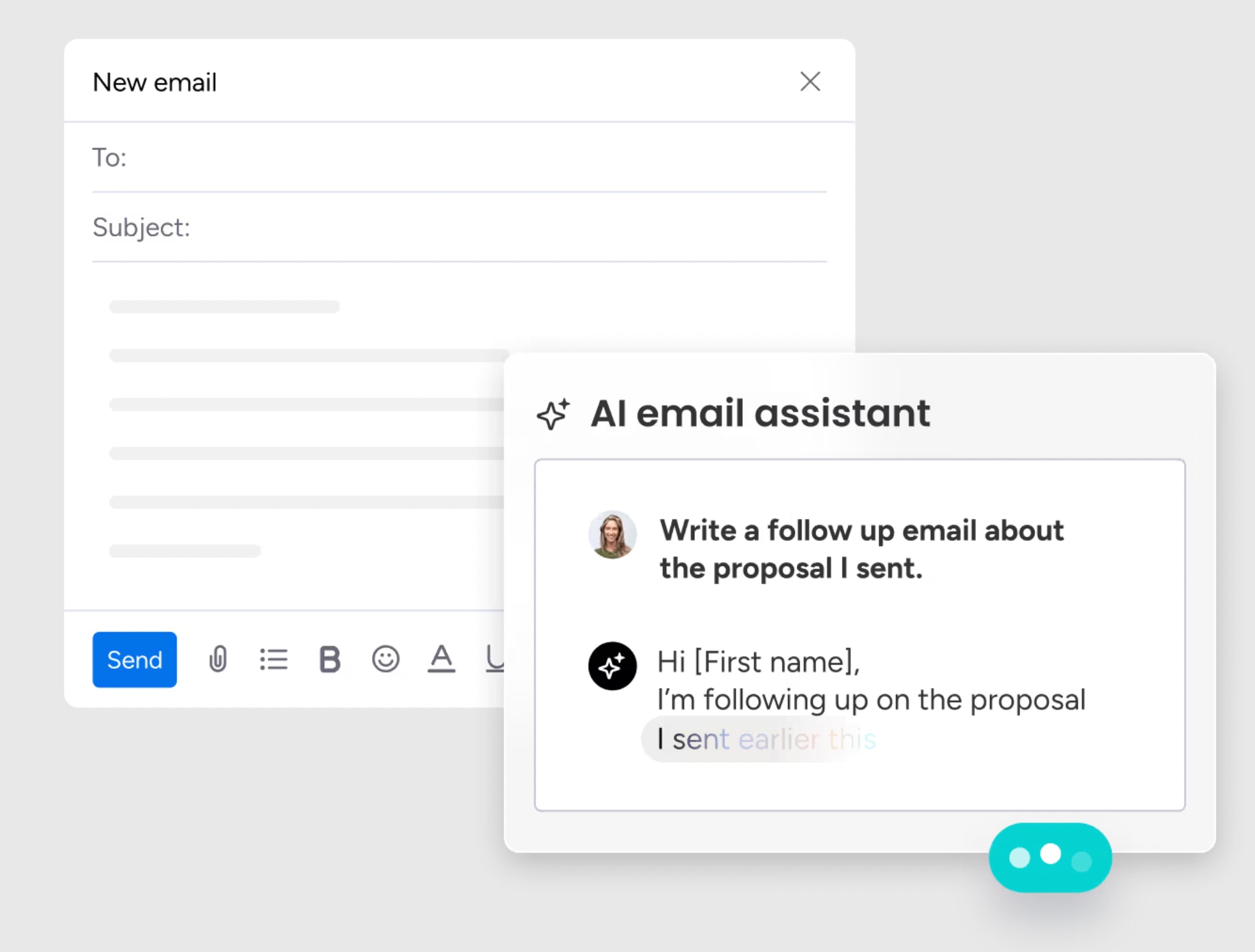
Navigate legal requirements for mass emailing
Following email laws protects your business and builds trust with subscribers. Compliance isn’t just about avoiding fines — it’s about respecting your audience.
Follow CAN-SPAM Act guidelines
The CAN-SPAM Act sets rules for commercial email in the United States. Key requirements include:
- Accurate sender information: Use your real business name and address
- Honest subject lines: Match your content to your subject
- Clear unsubscribe option: One-click opt-out that works immediately
- Prompt removal: Process unsubscribes within 10 business days
These rules apply even if you use an email service provider; you’re still responsible for compliance.
Ensure GDPR compliance
GDPR protects European Union residents’ data privacy. If you email anyone in the EU, GDPR rules apply to you.
Get explicit consent before adding people to your list. Explain how you’ll use their data. Let people access, correct, or delete their information. Keep records of when and how people consented.
Many businesses apply GDPR standards globally for simplicity and consistency.
Manage consent and unsubscribes
Make it easy for people to control what they receive. Preference centers let subscribers choose email frequency and topics instead of unsubscribing completely.
Process opt-outs immediately and thank people for their past engagement. Maintain suppression lists to prevent accidentally re-adding unsubscribed addresses.
Remember: Someone unsubscribing isn’t failure; it’s keeping your list healthy and engaged.
Track and improve mass email performance
Continuous improvement requires measuring the right things and acting on what you learn, a critical step since research shows that employees who understand how success is measured are 2x more likely to feel motivated. Data guides decisions and helps you serve your audience better.
Monitor essential email metrics
Different metrics tell different parts of your email story. Understanding what each one means helps you diagnose problems and spot opportunities.
Focus on these core metrics:
- Open rate: Percentage of delivered emails opened (indicates subject line appeal)
- Click rate: Percentage of opens that generated clicks (shows content relevance)
- Bounce rate: Percentage that couldn’t be delivered (reveals list quality)
- Unsubscribe rate: Percentage who opted out (signals content or frequency issues)
Run strategic A/B tests
Testing reveals what actually works for your specific audience. Start with clear hypotheses about what might improve performance.
Test methodically:
- One variable at a time: Change only subject lines, send times, or CTAs — not all 3
- Sufficient sample size: Need at least 1,000 recipients per test group
- Consistent measurement: Track the same metrics for fair comparison
- Document results: Build a library of what works for future campaigns
Optimize based on analytics
Turn insights into action by identifying patterns and implementing improvements systematically. Look beyond individual campaigns to spot larger trends.
Prioritize changes with the biggest potential impact. Test improvements before rolling them out completely. Monitor long-term trends, not just immediate results.
Transform your mass email strategy with monday CRM
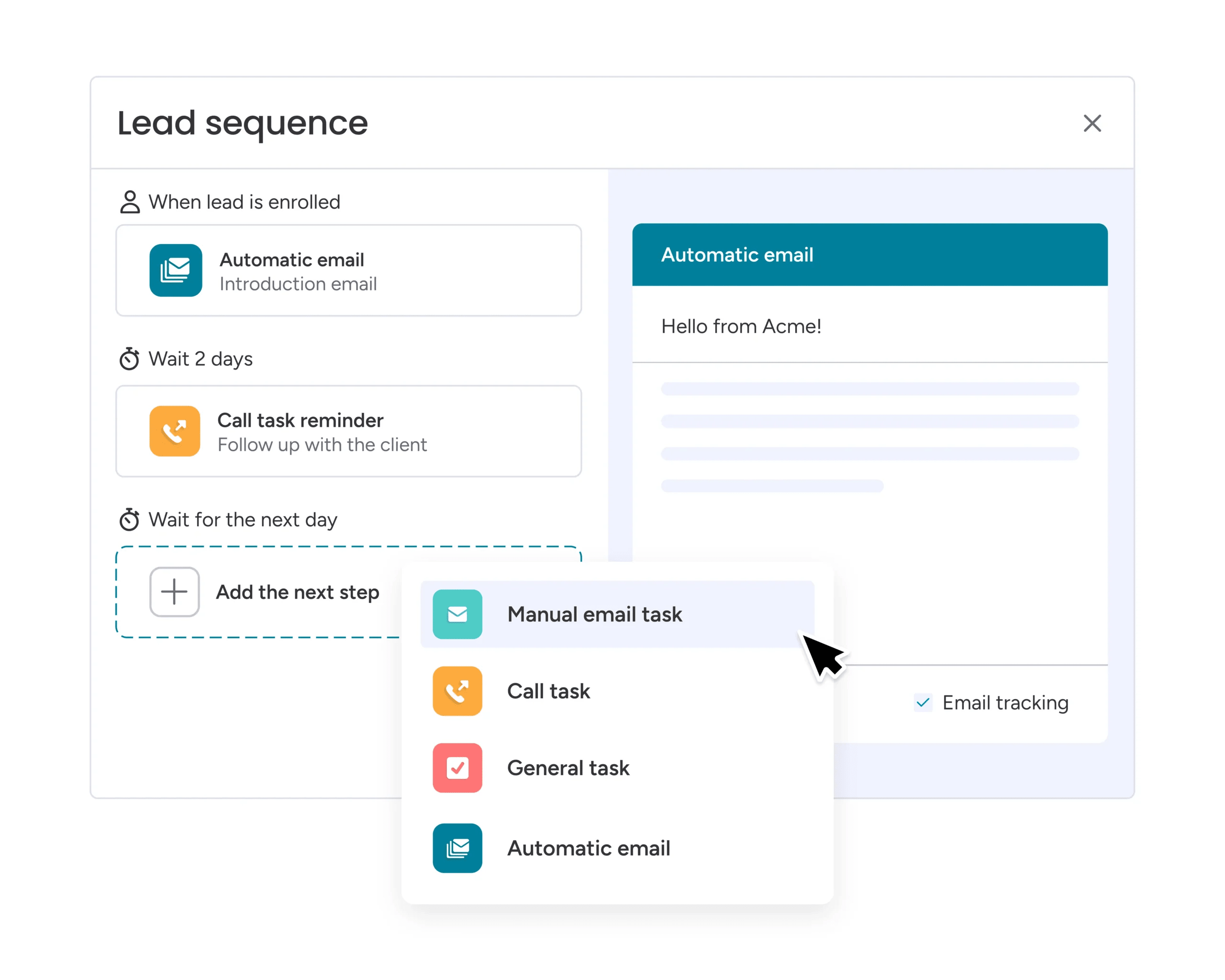
Get everything you need for successful mass email campaigns with monday CRM. The platform addresses common challenges while simplifying complex processes.
Centralize all contact data
Scattered customer information makes personalization impossible. monday CRM consolidates everything in one place — purchase history, support tickets, website activity, and custom fields specific to your business.
Real-time updates ensure you’re always working with current information. Automated data validation catches problems before they affect campaigns. Duplicate detection prevents sending multiple emails to the same person.
Build automated email workflows
Visual workflow builders let you create sophisticated campaigns without technical skills. Set triggers based on actions, dates, or data changes. Build multi-step sequences that adapt based on engagement.
Connect with your favorite email platforms while keeping customer data centralized. This approach combines specialized email tools with comprehensive customer management.
Track campaign performance visually
Visual dashboards show what’s working and what needs attention. Compare campaigns side-by-side. Identify your most engaged contacts. Connect email performance to actual revenue.
Visual reporting makes it easy to share results with your team and demonstrate email marketing value to leadership.
Connect your favorite mass email services
With integrations to popular email platforms, monday CRM lets you keep your preferred sending tools while gaining enhanced data management. Use the email service you love with the customer insights you need.
Send smarter mass emails that drive real results
When you combine compelling subject lines with strategic segmentation, proper technical setup, and continuous optimization, your emails transform from generic broadcasts into powerful engagement tools that build lasting customer relationships.
The difference between mass emails that get ignored and those that drive revenue comes down to having the right foundation: clean data, intelligent automation, and actionable insights all working together. With monday CRM, you get that foundation, centralizing customer information, automating complex workflows, and tracking performance in visual dashboards that make optimization simple.
Ready to transform your mass email campaigns? Try monday CRM to see how centralized data and intelligent automation can improve your results.
FAQs
How many emails can I send at once without being marked as spam?
There's no magic number for how many emails you can send without spam issues. Your sending limit depends on your sender reputation, email provider policies, and how engaged your recipients are. Focus on gradually building volume while maintaining high engagement rates rather than hitting a specific number.
What's the ideal time to send mass emails for maximum opens?
The best time to send mass emails varies by industry and audience, so testing is essential. Generally, weekday mornings (Tuesday through Thursday, 9-11 am in your recipients' time zones) perform well for B2B audiences, while B2C audiences might engage more during evenings or weekends.
Is it legal to buy email lists for mass email campaigns?
Buying email lists is legal but strongly discouraged for mass email campaigns as it can damage your sender reputation. Purchased lists typically have low engagement rates, high spam complaints, and can damage your sender reputation. Building an organic list through opt-in forms creates more engaged subscribers and better results.
How do I measure the success of mass email campaigns?
Measure mass email success by tracking open rates, click-through rates, conversion rates, and revenue generated. Calculate ROI by dividing campaign revenue by total costs (including platform fees, design time, and content creation), then multiply by 100 for a percentage.
What's considered a good open rate for mass emails?
A good open rate for mass emails typically ranges from 15-25%, though this varies significantly by industry and list quality. Focus on improving your own baseline rather than chasing industry averages, as engaged, well-targeted lists often achieve much higher rates.
How frequently should I send mass emails to my list?
Mass email frequency depends on your content value and audience preferences, typically ranging from weekly to monthly. Monitor unsubscribe rates and engagement metrics to find your optimal frequency — if unsubscribes spike or engagement drops, you're probably emailing too often.

